-
172009. 04
No. 8 View. 14185
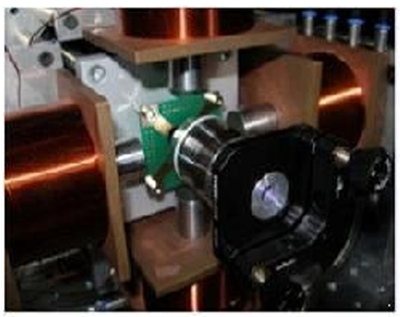
Korean scientists identify mechanism of dimensional conversion
Monitor conversion from 2-dimensional and 1-dimensional characters in nano material Korean scientists have identified dimensional conversion for the first time in the world. The Ministry of Education, Science and Technology (Minister Ahn Byung-man) said on April 9 that a team of Korean scientists actually monitored dimensional conversion (critical phenomenon), in which the characters of a square (two dimension) and a line (one dimension) co-exist, through a study of characters according to sizes of nano materials, and identified for the first that that common rules exist in such conversion. The study was conducted by teams of researchers led by Prof. Choi Seok-bong at the department of physics and astronomy of Seoul National University, and Prof. Lee Hyun-woo at the department of physics of Pohang University of Science and Technology, which are supported by the program for supporting veteran researchers (formerly state-designated laboratory program) that is funded by the MEST and the Korea Science and Engineering Foundation. The study, which scientifically demonstrated the crucial phenomenon of two physical situations (square, line) and then discovered common rules in such conversion, is a good example of the possibility for the existence of certain common rules in complicated biological and natural phenomena. Many scientists tried to identify such a phenomenon thus far, but failed in their attempts. As such, the study received high marks from the scientific journal, Nature. The British scientific journal Nature lauded the study, saying that the study presents the first experimental evidence of high credibility that clearly answers questions many scientists have failed to answer. The journal called the study a "really excellent paper," which will make unique contributions to the development and application of diverse nano materials, including nano-spintronics, which will draw keen attention in the future." The scientists monitored this conversion phenomenon through a study of characters according to the sizes of cutting-edge nano materials (less than approximately hundreds of nano meters (~100nm = 10-7m)), which are used in storage devices, including memories, in tune with dynamic development of ultra small, ultra high capacity, mobile electronic gadget technology. They were able to monitor the phenomenon using a scanning magnetic microscope, the world's only such measuring device that was designed and produced by the Korean scientists on their own. The scanning magnetic microscope was created to monitor reaction of a material to external magnetic fields, and in the study, the device played a critical role in demonstrating that when the size of nano particles become increasingly smaller (two dimension) and reaches a certain tipping point, a new character or line (one dimension) emerges, instead of that of square. The study is especially significant in that Korean scientists not only developed the device but also produced experimental agents, and conducted measurement and analysis on their own using homegrown technology. Prof. Choi said, "This suggests that Korea's research base and researchers, which have been accumulating over the past years, have reached a world class, and demonstrates that the environment has been prepared in Korea for scientists to spearhead world-class research." (Photo) Picture of internal core part of the scanning magnetic microscope. ScienceTimesKim Chung-hanchkim at kofac.or.kr [April 17, 2009] - - - - - - -Source - ScienceTimes -
162009. 04
No. 7 View. 14863
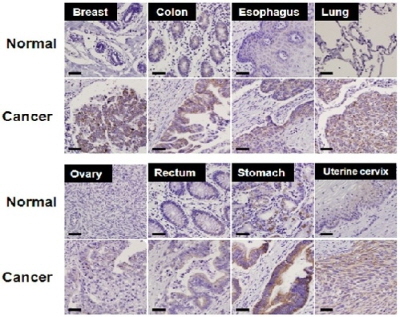
Chungnam National University proferssor identifies Cancer-triggering substance
Chungnam National University professor identifies cancer-triggering substance for first timeConfirms LETM-1 protein causes normal cells to change into cancerous cells Mechanism applied to all types of cancer.Chungnam National University said on March 30 that Park Jong-seon, professor of pharmacology at the university's medical school discovered for the first time in the world that 'LETM-01 protein' is a main substance that causes normal cells to change into cancerous cells.The finding was confirmed in types of cells, including breast cancer, colon cancer, lung cancer, ovarian cancer, gastric cancer. rectal cancer, stomach cancer, and cervical cancer.In the academic community, 'LETM-1' was believed to be the protein that triggers Wolf-Hirschhorn Syndrome, which causes retarded physical growth, mental disorder, microcrania, Greek helmet-type face, ruptures in lips or the mouth, facial defect, and heart disorder.Prof. Park's research team confirmed the destruction of normal cells by generating excessive volume of 'LETM-1.' The team found such necrosis triggers cancer by reducing the volume of mitochondria, which is an important micro-organ that plays key role in regulating energy metabolism within cells.The study was published in the March 24th online issue of "Cancer Research," the most prestigious cancer journal of the U.S. and will be announced at the American Association for Cancer Research (AACR) meeting, which will take places in Denver in April.Earlier, a preliminary basic study on biochemical mechanism of how LETM-1 functions within mitochondria was published in the January 9th online version of Cellular Signaling.Currently, the fact that damage of mitochondria is a major cause of cancer and metabolic disease is a hot issue in the biomedical community, and a string of studies have been published. Prof. Park's team discovered for the first time that LETM-1 proteins integrate with 'MRPL36,' a mitochondria protein, and thus block mitochondria from generating energy. -
092009. 04
No. 6 View. 14495
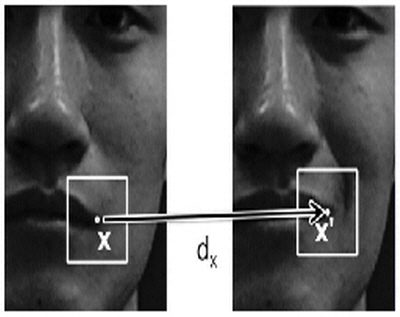
Scientists to develop 'warm machines' capable of reading people's mind
POSTECH Prof. Kim Dae-jin's team develops technology able to read four facial expressions of humans'To focus on development of human sensing technology to improve quality of elderly people's lives' It will be not long before a machine read your facial expression and mind. A team of researchers led by Prof. Kim Dae-jin at Pohang University of Science and Technology (President Baik Sung-gi) said it developed a technology that is capable of reading four different facial expressions of humans, including joy, anger, and surprise. Kim's team developed the technology that reads facial expressions through "feature points" of expressional changes. A test involving 20 people demonstrated 88 percent in accuracy of recognition of four minute facial expressions. Notably, the new technology allows the machine to automatically recognize minute facial expressions of humans, as it adopts "motion magnification" technology, unlike the conventional technology that is capable of only recognizing extreme facial expressions. Hence, the new technology is drawing keen attention. Prof. Kim's team plans to use the technology in improving the quality of life for the elderly and the disabled. By analyzing moves and behaviors of elderly shut-ins and the handicapped and understanding their intent, the team plans to develop advanced technology than can be applied to robots, among other devices. To this end, Prof. Kim's team is conducting the research jointly with a research team led by Prof. Takeo Kanade, a world authority in robotics vision at the Robotics Institute in Carnegie Mellon University in the United Sates, with financial support from the World Class University (WCU) program of Korea's Ministry of Education, Science and Technology. The technology for facial scanning and recognition and facial expression recognition developed by Prof. Kim's team has been transferred to Samsung Electronics. The technology will be adopted to Samsung's mobile handsets, including Omnia and Haptic phones, and digital cameras. Meanwhile, the British public scientific magazine, New Scientist, recently introduced Prof. Kim's research in an article, saying that it will not be long before a machine will read facial expressions of humans, how ever minute expressions are. ? Hello DD.comKim Yosepjoesmy at hellodd.com [April 09, 2009]- - - - - - -Source - HelloDD.com -
062009. 04
No. 5 View. 15219
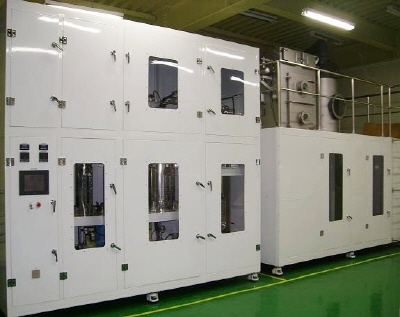
Technology developed for speedy production of dream insulation material
Technology developed for speedy production of 'dream insulation material, Aerogel,' 26 times faster than conventional methods. Korea institute of Energy Technology constructs facility for low-cost commercialization, capable of mass production. Product costs half price of foreign products, saves energy by over 30 %. Korean researches have developed a process technology for Aerogel, which is known as a "Dream Insulation Material," as it was used as insulator for Sojourner, the Mars expedition robot, in 1997. The Korea Institute of Energy Technology (President Han Moon-hee) said on April 2 that it has developed "process technology for the commercial production of silica Aerogel powder," a material that was not been adequately commercialized due to a complicated production process and high costs. The new technology allows for mass production of the material by reducing the production process time from 168 hours to only six hours. Korea has been developing the technology for years, but has had difficulties penetrating the market because it failed to secure core technology held by advanced countries. However, the development of the new technology has led to the establishment of production facilities for the first time in Korea, which can churn out up to 50,000 tons of prototype product of silica Aerogel powder per year. Conventional facilities for commercial production of the material use supercritical CO2 drying process, which requires high pressure equipment in addition to very costly material (Alokoxide: 96800 won/kg), but in the newly developed process, water glass, a general industrial material, is directly put in, and a new technology is used, which processes surface reforming and the reaction for transformation into gel simultaneously, and which allows for the adoption of a Fluidized Bed-drying process that is capable of drying the material successively, which in turn drastically reduces the production process and process time. Notably, the technology involves a low carbon 'green production' process compared with conventional methods that use carbon dioxide for supercritical drying. Compared with the conventional supercritical carbon dioxide-dependent drying process, the normal atmospheric drying process technology can save 25,900 toe/year during energy processing; and 200 toe/year in sewage treatment, and thus save a combined annual total of 26,100 toe (7.8 billion won). As such, the new technology is expected to drastically reduce energy use and costs for environmental processing. In particular, silica Aerogel powder that is produced using the newly commercialized technology boasts quality and performance on par with foreign products currently available in the market in terms of physical property. It also is expected to cost less than half the price of foreign products, which are sold for 130,000 won per ton. More than anything, the achievement is significant because Korean scientists have developed outstanding core technology that overcomes technology held by foreign companies. The Korean researcher submitted application for six patents for the technology. Ahn Young-soo, the head of the research team, said, "Since we now can mass produce costly silica Aerogel powder, which Korea relied solely on foreign imports thus far, at less than half the import price, the material industry will likely be activated. Cost saving resulting from the new technology will reach more than 30 percent in the areas of construction and industries. Since, Aerogel boasts extremely high isolation capacity, is harmless and inflammable, and generates no toxic gas in the event of fire, the boundary of application of the Aerogel insulation material will likely further expand." Hello DD.com,Lim Eun-hee,redant645 at hellodd.com[April 06, 2009]- - - - - - -Source - HelloDD.com -
082009. 01
No. 4 View. 13531

Opening ceremony for the year of 2009
KISTI held the opening ceremony for the year of 2009 at its main office on Jan.2nd. Dr. PARK YOUNG SEO,President has complimented KISTI staff for their contribution and research performances for 2008. At his speech, Dr.Park also opened strategic plan for 2009. He emphasised the importance of trust management for solidarity -
132008. 11
No. 3 View. 14193
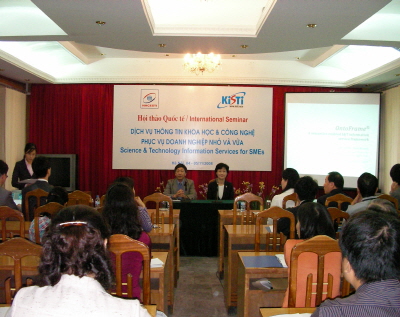
The 3rd Korea-Vietnam workshop on information support for SMEs
KISTI organized the 3rd international workshop in Hanoi,Vietnam on Nov.4-5. The workshop was held in cooperation with NACESTI, which is the national S&T information center under the Ministry of Science and Technology of Vietnam. This workshop aimed to provide researchers and administrators working for science and technology of Vietnam with up-to-dated technology and knowledge on cyberinfrastructure R&D environment. KISTI researchers from information analysis division, knowledge information center, information technology development division, supercomputing center, e-Science division introduced their research performance and future high-tech trend they will pursuit in the future. -
252008. 01
No. 2 View. 12959
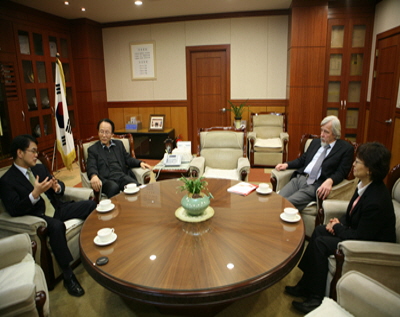
The CERN Executive Director visited KISTI
Dr. Rolf-Dieter Heuer, the European Organization for Nuclear Research(CERN) Executive Director, visited KISTI on January 22, 2010. The object of this visit was to promote mutual cooperation and exchange information between KISTI and CERN.Dr. Kim Joong-kwon, the KISTI Vice President, and Dr. Lee Jy-soo, the Director of KISTI Supercomputing center, greeted him and had a discussion on cooperation issues on collaborative research using supercomputers. After the meeting, he had the time to take a look around KISTI's facilities. During the visit, Dr. Heuer showed considerable interest in the work of KISTI, and he was hopeful that KISTI and CERN promote mutual cooperation on data sharing and developing software for the researchers. -
252008. 01
No. 1 View. 12303
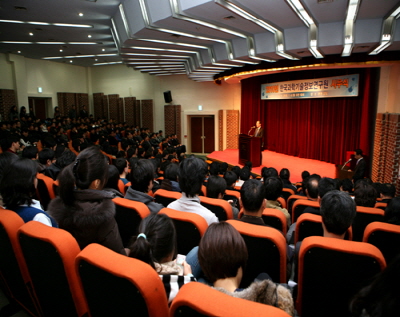
KISTI Held the Opening Ceremony for the Year of 2010
The KISTI employees gathered at its headoffice in Daejeon to start the New Year 2010 to promote a sense of community among the employees. President, Park Young-seo, complimented KISTI staffs for their contribution and research performance for last year. He then suggested "Creation of the World's best Intelligent Information" as strategic plan for New Year.

 Delete Article!
Delete Article!